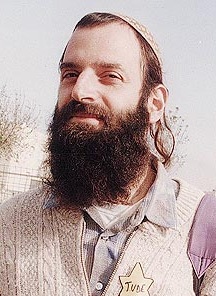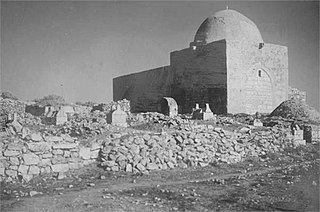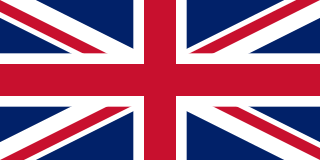
Jewish holidays, also known as Jewish festivals or Yamim Tovim, are holidays observed by Jews throughout the Hebrew calendar. They include religious, cultural and national elements, derived from three sources: mitzvot, rabbinic mandates, the history of Judaism, and the State of Israel.

Hebron is a Palestinian city in the southern West Bank, 30 kilometres (19 mi) south of Jerusalem. Hebron is capital of the West Bank's largest governorate, known as Hebron Governorate. With a population of 201,063 in the city limits, the adjacent metropolitan area within the governorate is home to over 700,000 people. Hebron spans across an area of 74.102 square kilometres (28.611 sq mi). It is the third largest city in the country, followed by Gaza and Jerusalem. The city is often considered one of the four holy cities in Judaism as well as in Islam and Christianity.

Baruch Kopel Goldstein was an American-Israeli mass murderer, religious extremist, and physician who perpetrated the 1994 Cave of the Patriarchs massacre in Hebron in the Israeli-occupied West Bank, an incident of Jewish terrorism. Goldstein was a supporter of Kach, a religious Zionist party that the United States, the European Union and other countries designate as a terrorist organization.

The Cave of the Patriarchs or Tomb of the Patriarchs, known to Jews by its Biblical name Cave of Machpelah and to Muslims as the Sanctuary of Abraham, is a series of caves situated 30 kilometres (19 mi) south of Jerusalem in the heart of the Old City of Hebron in the West Bank. According to the Abrahamic religions, the cave and adjoining field were purchased by Abraham as a burial plot, although most historians believe the Abraham-Isaac-Jacob narrative to be primarily mythological. The site is considered a holy place in Judaism, Christianity, and Islam.
Hilltop, outpost or lot 26, was an illegal outpost, consisting of a mobile home, founded by Netanel Ozeri outside Hebron in the West Bank. It lay approximately 100 metres (330 ft) from the Kiryat Arba settlement, in the Beqa'a valley. At the time of its destruction. Despite court orders, he kept expanding his outpost, refused to bullet-proof the caravan, fence the area he claimed in, or accept protection from the IDF.

Tisha B'Av is an annual fast day in Judaism. A commemoration of a number of disasters in Jewish history, primarily the destruction of both Solomon's Temple by the Neo-Babylonian Empire and the Second Temple by the Roman Empire in Jerusalem.

Rachel's Tomb is a site revered as the burial place of the Biblical matriarch Rachel. The site is also referred to as the Bilal bin Rabah mosque. The tomb is held in esteem by Jews, Christians, and Muslims. The tomb, located at the northern entrance to the West Bank city of Bethlehem, next to the Rachel's Tomb checkpoint, is built in the style of a traditional maqam, Arabic for shrine.

Tu B'Av is a minor Jewish holiday. In modern-day Israel, it is celebrated as a holiday of love, akin to Valentine's Day. It has been said to be an auspicious day for weddings.

The Cave of the Patriarchs massacre, also known as the Ibrahimi Mosque massacre or the Hebron massacre, was a mass shooting carried out by Baruch Goldstein, an American-Israeli physician and extremist of the far-right ultra-Zionist Kach movement. On 25 February 1994, during the Jewish holiday of Purim, which had overlapped in that year with the Islamic holy month of Ramadan, Goldstein, dressed in Israeli army uniform, opened fire with an assault rifle on a large gathering of Palestinian Muslims praying in the Ibrahimi Mosque in Hebron. He killed 29 people, including children as young as 12, and wounded 125 others. Goldstein was overpowered and beaten to death by survivors.
A seudat mitzvah, in Judaism, is an obligatory festive meal, usually referring to the celebratory meal following the fulfillment of a mitzvah (commandment), such as a bar mitzvah, bat mitzvah, a wedding, a brit milah, or a siyum. Seudot fixed in the calendar are also considered seudot mitzvah, but many have their own, more commonly used names.

Joseph's Tomb is a funerary monument located in Balata village at the eastern entrance to the valley that separates Mounts Gerizim and Ebal, 300 metres northwest of Jacob's Well, on the outskirts of the West Bank city of Nablus. It has been venerated throughout the ages by Samaritans, for whom it is the second holiest site; by Jews; by Christians; and by Muslims, some of whom view it as the location of a local sheikh, Yusef al-Dwaik or Dawiqat, who died in the 18th century.

Othniel was the first of the biblical judges. The etymology of his name is uncertain, but may mean "God/He is my strength" or "God has helped me".

Otniel is an Orthodox Israeli settlement in the West Bank. Located in the southern Judaean Mountains, south of Hebron, it falls under the jurisdiction of Har Hevron Regional Council. In 2022, it had a population of 1,041.
The ongoing conflict between Palestinians and Jewish Israeli settlers in the West Bank city of Hebron is part of the wider Israeli–Palestinian conflict. Hebron has a Palestinian majority, consisting of an estimated 208,750 citizens (2015) and a small Jewish minority, variously numbered between 500 and 800. The H1 sector of Hebron, home to around 170,000 Palestinians, is governed by the Palestinian Authority. H2, which was inhabited by around 30,000 Palestinians, is under Israeli military control with an entire brigade in place to protect some 800 Jewish residents living in the old Jewish quarter. As of 2015, Israel has declared that a number of special areas of Old City of Hebron constitute a closed military zone. Palestinians shops have been forced to close; despite protests Palestinian women are reportedly frisked by men, and residents, who are subjected every day to repeated body searches, must register to obtain special permits to navigate through the 18 military checkpoints Israel has set up in the city center.

Events in the year 1929 in the British Mandate of Palestine.
The 2002 Hebron ambush took place in the Wadi an-Nasara neighborhood in Hebron in the West Bank on 15 November 2002. Israeli forces were subjected to a double attack by fighters from the Palestinian Islamic Jihad. The battle was referred to in Israel as "The attack on the worshippers' route" The place where the attack took place became known as the "Alley of Death" both in Hebrew and Arabic. The ambush was initially dubbed as the "Sabbath massacre" by official Israeli spokespersons.

The old Jewish cemetery in Hebron, is located to the west of the Tomb of Machpela on a hill and has been used as a Jewish cemetery for hundreds of years, as attested to by Ishtori Haparchi, who noted a Jewish cemetery in the area in 1322. Other sources indicate the cemetery being mentioned in a letter dated to 1290.

The tomb of Jesse and Ruth is an ancient tomb with a small Jewish synagogue, located within the ruin of Deir Al Arba'een in the Tel Rumeida section of Hebron. In the Jewish tradition, the tomb of Jesse and Ruth is considered a sacred site. The place is in area H2 of Hebron, under Israeli control.

On 21 March 2024, David Ben Avraham, a 63-year-old Palestinian Jewish convert, was shot and killed by an Israel Defence Forces (IDF) soldier near Elazar, an Israeli settlement in the Israeli-occupied West Bank. The soldier had approached Ben Avraham and asked whether he was Jewish, to which he responded affirmatively. In the ensuing encounter, the soldier pointed his rifle at Ben Avraham and threatened to kill him if he reached for his bag; Ben Avraham complied but was nevertheless shot dead.















